Archive for the 'National cinemas: China' Category
Homage to Mme. Edelhaus
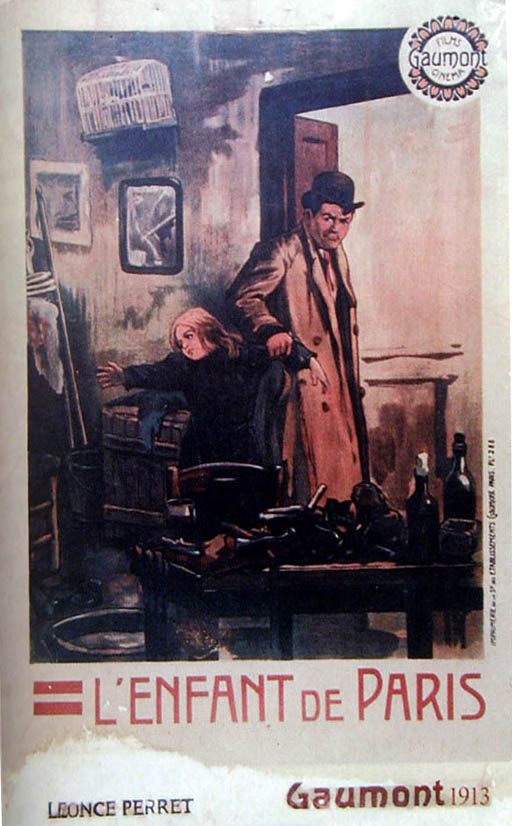
Why are Americans polarized between francophobia and francophilia? Some people mock the French for liking Jerry Lewis, when most French people probably don’t even know who he is. Others think that France is the repository of world culture and represents the finest in writing about the arts, even though the Parisian intelligentsia can be pretentious and hermetic.
But we must face facts. When it comes to cinephilia, the French have no equals. They grant film a respect that it wins nowhere else. Spend a year, or even a month, in Paris, and you will feel like a Renaissance prince. This is a city where one lonely screen can run tattered prints of One from the Heart and Hellzapoppin!, once a week, indefinitely.
My first trip was too brief, only a week in 1970, but my second one—four weeks of dissertation research in 1973—left me exhausted. Reading Pariscope on the way in from the airport, I learned about a Tex Avery festival. I checked into my hotel and Métro’d to the theatre, where I and a bunch of moms and kids gazed in rapture upon King-Size Canary. Another time, also coming in from the airport, Kristin and I passed a marquee for King Hu’s Raining in the Mountain. Next stop, Raining in the Mountain. My memories of The Naked Spur, Ministry of Fear, Liebelei, Tati’s Traffic, and Vertov’s Stride Soviet! are inextricable from the Parisian venues in which I saw them.
Sound like a lament for days gone by? Nope. You can find the same variety on offer today. Of course the two monthlies, Cahiers du cinéma and Positif, have to take a lot of credit for this. Add Traffic, Cinéma, and several other ambitious journals, and you get a film culture unrivalled in the world.
Critics from Louis Delluc onward have led thousands of readers toward appreciating the seventh art. Historians like Georges Sadoul, Jean Mitry, Laurent Mannoni, Francis Lacassin, and others have enlightened us for decades. Academic film analysis would not be what it is without Raymond Bellour, Noel Burch, Marie-Claire Ropars, Jacques Aumont, and a host of other scholars. Above all stands André Bazin, the greatest theorist-critic we have had.
And the books! Arts-and-sciences publishing receives government subsidies; the French understand that books contribute to the public good. There are plenty of worse ways to spend tax dollars (e.g., trumped-up military invasions). The French, like the Italians, have created an ardent translation culture too. If you can’t read something in Russian or German, there’s a good chance it’s available in French.
I was reminded of the glories of Gallic film publishing when the mailman tottered to my door this week with twenty-two pounds worth of recent items I’d ordered. I haven’t even read them yet; otherwise, they’d be filed with Book Reports. Instead I want to spend today’s blog celebrating them as fruits of an ambition that has no counterpart in English-language publishing. All are grand and gorgeous and informative to boot.
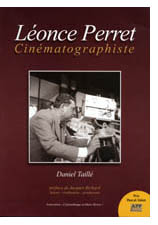 Daniel Taillé, Léonce Perret Cinématographiste. Association Cinémathèque en Deux-Sèvres, 2006. 2.5 lbs.
Daniel Taillé, Léonce Perret Cinématographiste. Association Cinémathèque en Deux-Sèvres, 2006. 2.5 lbs.
A biographical study of a Gaumont director still too little known. Perret was second only to Feuillade at Gaumont, and he performed as a fine comedian as well. His shorts are charming, and his longer works, like L’enfant de Paris (1913), remain remarkable for their complex staging and cutting. After a thriving career in France, Perret came to make films in America, including Twin Pawns (1919), a lively Wilkie Collins adaptation. He returned to France and was directing up to his death in 1935.
Although the text seems a bit cut-and-paste, Taillé has included many lovely posters and letters, along with a detailed filmography, full endnotes, and a vast bibliography. It compares only to that deluxe career survey of the silent films of Raoul Walsh, published by Knopf. . . .Oh, wait, there’s no such book. . . .Think there ever will be?
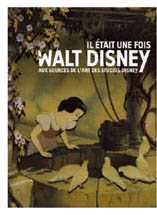 Il était une fois Walt Disney: Aux sources de l’art des studios Disney. Galéries nationales du Grand Palais, 2006. 4 lbs.
Il était une fois Walt Disney: Aux sources de l’art des studios Disney. Galéries nationales du Grand Palais, 2006. 4 lbs.
A luscious catalogue of an exposition tracing visual sources of Disney’s animation. Illustrated with sketches, concept paintings, and character designs from the Disney archives, this volume shows how much the cartoon studio owed to painting traditions from the Middle Ages onward. It includes articles on the training schools that shaped the studio’s look, on European sources of Disney’s style and iconography, on architecture, on relations with Dalí, and on appropriations by Pop Artists. There’s also a filmography and a valuable biographical dictionary of studio animators.
Some of the affinities seem far-fetched, but after Neil Gabler’s unadventurous biography, a little stretching is welcome. This exhibition (headed to Montreal next month) answers my hopes for serious treatment of the pictorial ambitions of the world’s most powerful cartoon factory. The catalogue is about to appear in English–from a German publisher.
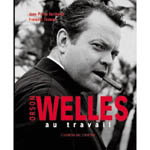 Jean-Pierre Berthomé and François Thomas. Orson Welles au travail. Cahiers du cinéma, 2006. 4 lbs.
Jean-Pierre Berthomé and François Thomas. Orson Welles au travail. Cahiers du cinéma, 2006. 4 lbs.
The authors of a lengthy study of Citizen Kane now take us through the production process of each of Welles’ works. They have stuffed their book with script excerpts, storyboards, charts, timelines, and uncommon production stills.
The text, on my cursory sampling, will seem largely familiar to Welles aficionados; the frames from the actual films betray their DVD origins; and I would like to have seen more depth on certain stylistic matters. (The authors’ account of the pre-Kane Hollywood style, for instance, is oversimplified.) Yet the sheer luxury of the presentation overwhelms my reservations. A colossal filmmaker, in several senses, deserves a colossal book like this.
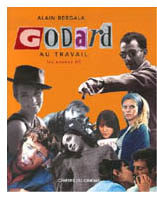 Alain Bergala. Godard au travail: Les années 60. Cahiers du cinéma. 2006. 5 lbs.
Alain Bergala. Godard au travail: Les années 60. Cahiers du cinéma. 2006. 5 lbs.
In the same series as the Welles volume, even more imposing. If you want to know the shooting schedule for Alphaville or check the retake report for La Chinoise (these are eminently reasonable desires), here is the place to look. Detailed background on the production of every 1960s Godard movie, with many discussions of the creative choices at each stage. Once more, stunningly mounted, with lots of color to show off posters and production stills.
Anybody who thinks that Godard just made it up as he went along will be surprised to find a great degree of detailed planning. (After all, the guy is Swiss.) Yet the scripts leave plenty of room to wiggle. “The first shot of this sequence,” begins one scene of the Contempt screenplay, “is also the last shot of the previous sequence.” Soon we learn that “This sequence will last around 20-30 minutes. It’s difficult to recount what happens exactly and chronologically.”
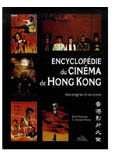 Emrik Gouneau and Léonard Amara. Encyclopédie du cinéma du Hong Kong. Les Belles Lettres, 2006. 6.5 lbs.
Emrik Gouneau and Léonard Amara. Encyclopédie du cinéma du Hong Kong. Les Belles Lettres, 2006. 6.5 lbs.
The avoirdupois champ of my batch. The French were early admirers of modern Hong Kong cinema, but their reference works lagged behind those of Italy, Germany, and the US. (Most notable of the last is John Charles’ Hong Kong Filmography, 1977-1997.) More recently the French have weighed in, literally. 2005 gave us Christophe Genet’s Encyclopédie du cinéma d’arts martiaux, a substantial (2 lbs.) list of films and personalities, with plots, credits, and French release dates.
Newer and niftier, the Gouneau/ Amara volume covers much more than martial arts, and so it strikes my tabletop like a Shaolin monk’s fist. There are lovely posters in color and plenty of photos of actors that help you identify recurring bit players. Yet this is more than a pretty coffee-table book. It offers genre analysis, history, critical commentary, biographical entries, surveys of music, comments on television production, and much more. It has abbreviated lists of terms and top box-office titles, as well as a surprisingly detailed chronology.
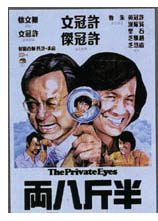 Above all—and worth the 62-euro price tag in itself—the volume provides a chronological list of all domestically made films released in the colony from 1913 to 2006! Running to over 200 big-format pages, the list enters films by their English titles and it indicates language (Mandarin, Cantonese, or other), release date, director, genre, and major stars. Until the Hong Kong Film Archive completes its vast filmography of local productions, this will remain indispensable for all researchers.
Above all—and worth the 62-euro price tag in itself—the volume provides a chronological list of all domestically made films released in the colony from 1913 to 2006! Running to over 200 big-format pages, the list enters films by their English titles and it indicates language (Mandarin, Cantonese, or other), release date, director, genre, and major stars. Until the Hong Kong Film Archive completes its vast filmography of local productions, this will remain indispensable for all researchers.
Mme. Edelhaus was my high school French teacher. A stout lady always in a black dress, she looked like the dowager at the piano during the danse macabre of Rules of the Game. She was mysterious. She occasionally let slip what it was like to live under Nazi occupation, telling us how German soldiers seeded parks and playgrounds with explosives before they left Paris. When I asked her what avant-garde meant, she replied that it was the artistic force that led into unknown regions and invited others to follow–pause–“in the unlikely event that they will choose to do so.”
For three years Mme. Edelhaus suffered my execrable pronunciation. When I tried to make light of my bungling, she would ask, “Dah-veed, why must you always play the fool?”
I suppose I’m still at it. But thanks largely to her I’m able to read these books as well as look at them. She opened a path that’s still providing me vistas onto the splendors of cinema.
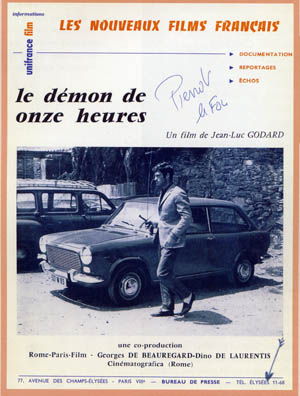
Movies that restore your faith in cinema, and audiences
David from Vancouver:
One of the pleasures of film festivals is the enthusiasm you pick up from the audiences. Queueing for a screening, you can talk with people about what they’ve seen or expect to see. This festival is so popular locally that some viewers take a week or two off work. Then sitting in the theatre and waiting for the show to start, you hear fascinating conversations. Last night, a young Taiwanese man (Frank) and a young Korean woman (Yuri) were sitting behind me and talked about what they were looking forward to, what they’d seen on DVD, how they came to Canada, and so on. Their love of cinema shone through plainly; somebody should make a movie about their lives.
People have every reason to be fired up about this festival. After five days here, I’m awash in fine movies. Besides the ones I’ve already noted, here are some standouts:
Opera Jawa: An ambitious reworking of an episode from the Ramayana, full of splendid imagery—everything from elaborate dance numbers to sudden appearances of shadow puppets. The soundtrack is equally lush, with gamelan mixing with more pop-flavored melodies, and the classic tale is intercut with current political struggles.
Monkey Warfare: A clear-eyed study of baby boomers stuck in late midlife, recalling their 1960s activism with both pride and guilt. It’s tough to make a movie with only three principal characters, but Reg Harkema pulls it off, blending comedy and drama and throwing in enough neo-Godardian flourishes to keep you off-balance. A very funny post-credits sequence. (But don’t Molotov cocktails also contain sand?)
The Magic Mirror: I tend to like about half of Manoel de Oliveira’s works, and I thought during the first forty-five minutes that this wouldn’t be one of them. Of course everything was filmed with his quiet majesty. (Advocates of the “clean image” furnished by HD should study what O’s films can squeeze out of Eastman stock: his etched, enameled images make every texture pop out at you.) But the early scenes feature rather repetitive dialogues about a wealthy woman who hopes to be granted a vision of the Virgin. I couldn’t see where all this was going and suspected that I was in the presence of what my friend J. J. Murphy, borrowing from Manny Farber, calls elephant art.
So I was squirming until a forger enters the scene with a plan to stage a vision for Mme Elfreda. Things get stranger and more elliptical, moving toward luminous glimpses of her final journey to Venice and Jerusalem. By the end I was completely won over by this grave, wise film. Now I have to go back and watch the beginning to see what I missed. You have to take these things on trust, especially from a director who’s lived nearly a hundred years.
Big Bang Love—Juvenile A: I’m not a big admirer of Miike Takeshi’s films, but I liked this better than most. Very stylized treatment of a young bully’s death in prison, with startling images and passages of brilliant cutting, and a landscape that haunts you. (Let’s just mention the pyramids and the rocket ship.)
Syndromes and a Century: A teasing, mesmerizing string of situations involving two doctors in a Thai hospital. Shot largely in long, distant takes, the film works out variations in its conversations among doctors, patients (including two Buddhist monks) and their lovers. Plot lines are sketched without being consummated, and the viewer is coaxed into imagining different futures for the people who drift into our ken. Apichatpong Weerasethakul, maker of Mysterious Object at Noon and Tropical Malady, has emerged as the major Thai director with his enigmatic and engrossing films. For those of you in the Midwest, take pride: He studied at the Film School of Chicago’s Art Institute.
Still Life: Jia Zhangke’s newest feature, crowned at Venice, has immediately become my favorite of his works. The city of Fengjie, being slowly demolished before it will be flooded by the immense Three Gorges Dam, becomes as vivid a presence as the theme park in The World. Day laborers take shelter in collapsing buildings, and prostitutes ply their trade in rooms with only three walls. One worker has come to town looking for his ex-wife; a woman has come from Shanghai seeking to divorce her husband.
The parallels aren’t forced, and the two stories are integrated by one of the most daring visual surprises I’ve seen in recent cinema. The stories are intimate, built out of small-scale encounters and daily routines, but they feel oddly epic too, as the hollowed-out city crumbles around the characters. In fewer than two hundred shots, many of them gliding along surfaces and faces, Jia presents a vision of humans obstinately seeking a better life. Shot on HD and projected on video, Still Life proves that digital filmmaking can evoke both thumping immediacy and poetic abstraction. (Keep your eye on the backgrounds.) It’s been acquired for Canada: What stateside distributor will pick it up?













